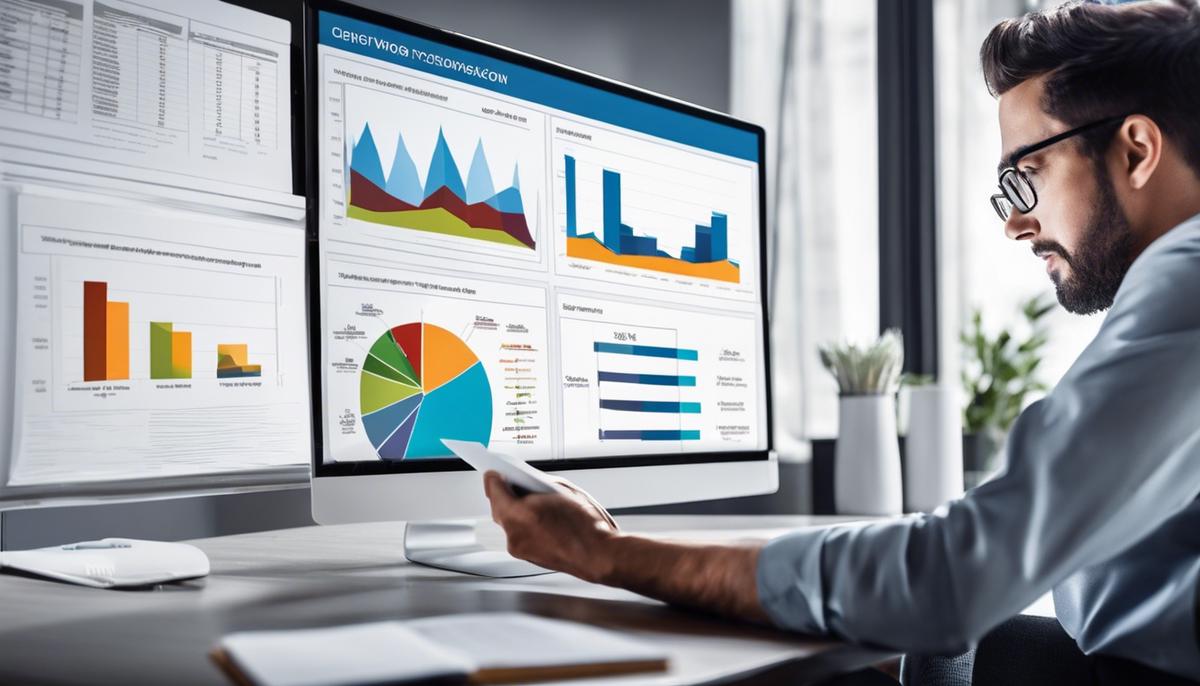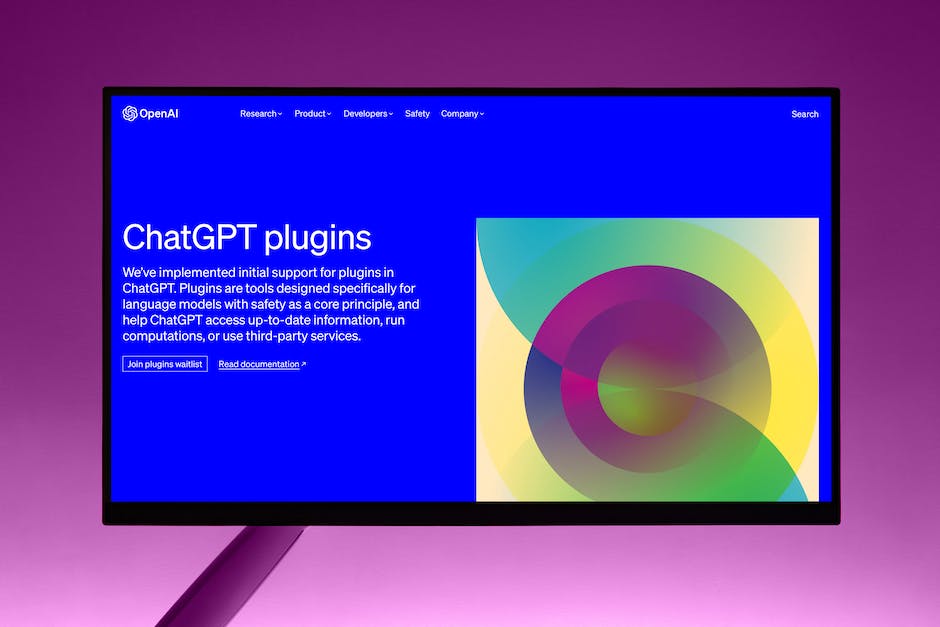
In our digital age, a company’s online presence can be the fulcrum on which its commercial success balances. As the interface where potential customers and business goals intersect, the optimization of conversion rates stands as a pivotal strategy. We embark on a comprehensive journey to unpack the intricacies of Conversion Rate Optimization (CRO), a venture that begins by dissecting the myriad facets of Analyzing Your Target Audience. By understanding who we are speaking to—diving into demographics, psychographics, and behavior—we can craft experiences that resonate on a profound level and lead to heightened conversions. The world of Website and Landing Page Optimization further extends our toolkit, where the delicate balance of design and functionality can spell the difference between a user’s departure and a conversion. The voyage through the vast expanse of CRO is charted with insights, fortified by Effective Use of Data Analytics, and pioneered with an understanding of the Psychology of Conversion, wielding these as our compass to navigate through the complex seas of digital engagement.
Analyzing Your Target Audience
Who Is Your Ideal Customer and What Do They Crave?
Identifying your ideal customer is a foundational step that can skyrocket a business’s success exponentially. It’s not just about understanding who will swipe their card for your product or service—it’s about comprehending their deepest desires, their unspoken needs, and how your offering fits into their narrative. An ideal customer isn’t simply a demographic or a statistic; they’re the embodiment of the ultimate consumer for what you’re selling.
In this landscape where consumer preferences evolve with lightning speed, tapping into the core of what customers yearn for isn’t just smart, it’s non-negotiable. Knowing your customer inside out is the secret sauce to not only capturing but also retaining market share.
Let’s tear down the complexities and focus on the essentials. Imagine an individual who not only benefits from what you offer but is also the most likely to purchase it. What age range do they fall into? What kind of lifestyle do they lead? Understanding these facets means you can personalize your marketing to resonate deeply, striking a chord that harmonizes with their life’s soundtrack.
That perfect customer intrinsically craves connection. They seek products that seamlessly integrate into their lives and services that feel as if they were tailored just for them. They desire transparency and authenticity, a brand they can trust as a close acquaintance rather than a distant billboard. Genuine engagement rules the roost here—forget the hard sell, welcome the meaningful conversation.
They’re also looking for convenience, something that simplifies the complexities of modern lives. Solutions that save time, that bring a sense of order and efficiency, are like magnets for this audience. They want their needs anticipated, their problems solved before they even perceived them.
Intriguingly, the deepest craving of the ideal customer is often a sense of belonging. Accessible communities centered around brands, where shared values and interests create a rich tapestry of connection—that’s where magic happens. When customers find a tribe within a brand ecosystem, loyalty skyrockets, and word-of-mouth becomes the most potent marketing tool.
Remember, demographics can be misleading; psychographics tell the story beneath the surface. What are their hobbies? What keeps them up at night, and what gets them out of bed in the morning? Grasp these subtleties, and you’re golden.
In the realm of business savviness, keeping a finger on the pulse of market trends is crucial. But the real trick is offering a product or service that fits into those trends while fulfilling a sustainable niche. It’s not just about following the herd; it’s about leading it to greener pastures.
As the entrepreneur behind the embracing brand, one must cull insights from every source imaginable, forging connections that paint a broader picture of the market’s evolving tapestry. Bringing that to bear in a product or service that feels almost co-created with your ideal customer—that’s when a brand transcends being a mere choice and becomes a lifestyle.
The question “Who is your ideal customer and what do they crave?” is a clarion call to action. An invitation to lean into the challenge and emerge with offerings so compelling, so well-matched to your customer’s cravings, that they become not just buyers, but evangelists.
Harness this understanding, nail the product-market fit, and you’ll find your business not just succeeding, but flourishing. After all, a venture thrives when it’s built around the very people it aims to serve. The target isn’t just the consumer—it’s their lifestyle, their values, their unexpressed wishes. Delve into who they really are, and cater to that with zeal, and there’s hardly a limit to what you can achieve.

Website and Landing Page Optimization
Craft a Website That Converts: Leveraging User-Centric Designs and Clear Calls to Action
In the digital economy, a business’s website acts as its virtual storefront, and crafting one that effectively converts visitors into customers is both an art and a science. A well-designed website that captivates and engages your audience can be the linchpin of a thriving online presence.
Aim for an Intuitive User Experience
Navigating your website should be intuitive and seamless. This means having a clean layout, readable fonts, and a color scheme that is not only pleasing to the eye but also aligns with your brand. Pages should load swiftly, as modern users expect instant access and have little patience for sluggish websites. Moreover, ensuring your site is mobile-responsive isn’t just recommended; it’s essential, as more people browse on their phones and tablets than ever before.
Clarity Is Key
Often, websites fall into the trap of overcomplicating things. Reevaluate your site’s content and structure; remove any jargon and industry speak that might confuse your visitors. Remember, what’s clear to the seasoned professional might be gibberish to the layman. The content should communicate the benefits of your offerings crisply and clearly. Employ bullet points, bolded text, and infographics to make key information stand out.
Harness the Power of Social Proof
Humans inherently trust the opinions of others. Including testimonials, user reviews, and case studies on your site can significantly bolster credibility. Highlight stories where your product or service made a significant impact, preferably with relatable scenarios that potential customers can see themselves in.
Leverage Clear Calls to Action (CTAs)
CTAs are the signposts that guide users on what to do next. Whether it’s ‘Subscribe Now’, ‘Get a Free Trial’, or ‘Learn More’, each CTA should be prominent and persuasive. The language used here should spark excitement and create urgency without sounding pushy. It’s about striking the perfect balance.
Optimize for Conversion Rate
Consider implementing A/B tests to see which versions of your site yield better conversion rates. Small changes, like altering the color of a button, can sometimes have surprising effects on user behavior. Use analytics to track visitor interactions and continuously refine your strategies.
Don’t Shy Away from Chatbots and Live Chat
Incorporating live chat or chatbots can dramatically improve the user experience by providing instant interaction. By promptly addressing queries and concerns, you reduce bounce rates and foster trust.
Ensure Secure Transactions
In light of frequent data breaches, consumers are more cautious about online security. Make sure your website is SSL certified, and your payment gateways are secure. This not only protects your customers but also improves your site’s Google rankings.
Stay Above the Fold
The most vital content should be ‘above the fold’, meaning it’s visible without scrolling. This real estate is prime for communicating your value proposition and hooking interest. Make it count with captivating headlines and engaging imagery.
Finally, remember that your website is never truly finished. It requires constant iteration and adaptation to the evolving needs and behaviors of your target market. With each tweak and adjustment, always keep the user’s journey in mind. Prioritize their experience, and the conversions will follow.

Effective Use of Data Analytics
Harnessing Data to Drive Conversion Strategy: The Entrepreneur’s Playbook
When it comes to enhancing conversion strategy, data isn’t just beneficial—it’s the backbone of success. By leveraging the insights that data provides, businesses can craft strategies that not only resonate with their audience but also lead to tangible growth in conversions. The key lies in understanding what to track and how to interpret it to make informed decisions.
Measuring User Engagement: The Digital Footprint
Analyze the metrics that matter. Track clicks, time spent on the page, bounce rates, and engagement levels to gain a clear picture of user behavior. These metrics reveal the strengths and weaknesses of current content, what captivates the audience and where they lose interest. It’s about peeling back the layers to understand the story behind the user interaction, guiding the optimization of the content strategy with precision.
Optimizing Conversion Funnels: Journey Mapping
Delve into the customer journey. Identify the typical paths users take through the website, examining flows from landing pages to checkout. Where are users dropping off? Is there a disconnect in the funnel? By scrutinizing conversion paths, pinpoint areas for refinement, smoothing out any friction points—be it a cumbersome checkout process or a distracting navigation menu—that might deter conversions.
Split Testing: Letting Data Lead Design Choices
Embrace A/B testing. Experiment with various elements—headlines, images, button colors—to ascertain what clicks with the audience. Even subtle changes can make a significant impact on conversion rates. It’s not just about aesthetics; it’s about effectiveness. The goal is to create evidence-based designs that have been battle-tested by user preferences and behaviors.
Customer Feedback: Closing the Loop
Don’t just guess; ask. Utilize surveys, feedback forms, and usability tests to gather direct input from users. Are there features they long for? Hurdles they encounter? This qualitative data fleshes out the quantitative side, offering a rounded view of customer needs and preferences. The conversion strategy must be rooted in real customer voices to resonate authentically.
Analyzing Competitor Data: Benchmarking Success
Keep an eye on the competition. Assess what similar businesses are doing and benchmark their tactics. How does their user experience stack up against yours? Competitive analysis isn’t about imitation—it’s a strategic tool to position offerings in a way that highlights unique value propositions.
Data-Driven Personalization: The Customized Experience
Harness the power of personalized experiences. Use data to segment audiences, tailoring messages, and offers that hit home for each subgroup. Understand that personalization goes beyond just inserting a name into an email; it’s about custom-tailored content that reflects individual behaviors and preferences, leading to increased relevance and, in turn, higher conversions.
Real-Time Analytics: Agile Decision-Making
React in real-time. Utilize analytics tools that provide live data, allowing for swift, informed changes to campaigns and strategies as customer behaviors unfold. It’s this agility that can set a business apart, with the ability to capitalize on trends and pivot strategies instantaneously to seize conversion opportunities as they arise.
It’s evident data is not merely a buzzword—it’s an indispensable element of a robust conversion strategy. In today’s digital landscape, the entrepreneurs who thrive are those who interpret and act on data-driven insights with agility and precision. This approach not only tailors the user experience but transforms users into active participants in the creation of products and services that meet their exact needs—a true hallmark of an innovative and customer-centric business strategy.
As entrepreneurs continue to navigate the shifting terrains of customer expectations and digital possibilities, the mantra remains clear: Inform every decision with data, engage with customers authentically, and consistently refine the approach for the ever-evolving marketplace, all without the need for a summary. After all, in the world of conversions, it’s the results that speak for themselves.

Psychology of Conversion
Unleashing the Power of Psychological Triggers in Conversion
When talking about conversion, it’s not just about having an attractive landing page or a compelling sales pitch. It’s deeper than that. We delve into the psychological triggers—those subtle cues that when pulled, can unlock a consumer’s decision-making process and lead to a successful conversion.
Psychological triggers go beyond a rudimentary understanding of a client’s needs; they tap into the subconscious desires and the emotions that drive human behavior. Now, let’s expand on the reliability of social proof. Humans are inherently social creatures, and we look to the behavior of others when making decisions. This herd mentality means that testimonials, reviews, and endorsements are immensely powerful for driving conversions. These elements leverage society’s influence to boost credibility and trustworthiness.
Calls to action (CTAs), for example, are pivotal in conversion strategy. A powerful CTA is like a signpost, guiding the audience on what to do next. It’s not just about using action verbs; it’s about creating a sense of urgency and benefit that makes the offer irresistible. Remember, make the next steps clear and the path to purchase seamless.
But what about the convenience of interactions? Enter chatbots and live chat services. Imagine a personal concierge for every site visitor, ready to assist, guide, and even upsell. This 24/7 presence not only aids in conversion but also enhances overall user experience and satisfaction.
Security, especially concerning online transactions, cannot be left to chance. A secure transaction might not be the most thrilling aspect to highlight, but it is undoubtedly one of the most reassuring to a customer. Ensure that your platform’s security is ironclad and transparent, from the padlock icon in the web address to the certification badges from recognized security firms.
Clutter is the nemesis of conversion. Keep the most significant content ‘above the fold’. This old newspaper term applies vitally to digital layouts; if it’s crucial, make sure it’s visible without scrolling. This prime real estate should host the most persuasive and conversion-focused content.
Now, while each of the individual elements mentioned thus far is crucial, it’s the alchemy of bringing them together that results in a potent conversion strategy. Without continuous iteration and adaptation, even the most successful conversion tactics can become stale. Trends shift, user behaviors change, and competitors evolve. Keeping a conversion strategy dynamic ensures that the success is not a flash in the pan but a sustained victory.
All this would be theoretical without diving into the invaluable nature of measuring engagement. Tracking user interactions gives insight into what works and, more importantly, what doesn’t. This analytical approach might reveal surprising patterns in user behavior, inspire new ways to connect, and opportunities to optimize each stage of the conversion funnel.
Speaking of analytics, real-time data is the thrumming pulse of an agile marketing strategy. Reacting to customer behaviors, adapting to market changes, and pivoting strategies in real-time can significantly enhance conversion potential.
In the quest for conversion, remember this: your efforts are not just about selling a product or service. It’s about reading and resonating with the human at the other side of the screen. Harness these psychological triggers, and witness the alchemy that turns digital window shoppers into loyal customers.

Innovating with Conversion Rate Optimization (CRO) Tools
Revolutionizing Your Marketing with Cutting-Edge CRO Tools
When the goal is to tighten up the marketing machine and ensure every click counts, Conversion Rate Optimization (CRO) tools aren’t just useful; they’re absolutely crucial. The right suite of tools can tweak and transform a digital strategy from bland to brilliant, driving sales through the roof.
The cornerstone of any successful online endeavor rests on understanding the user experience (UX). Every scroll, every hesitation, every click is a story – a vignette in the customer’s journey. It’s time to dive into the treasure trove of CRO tools that can catapult your strategies into uncharted territories of efficiency and engagement.
Heat Mapping: Seeing Through Your Users’ Eyes
Ever wondered how users interact with your website? Heat mapping tools offer a visual narrative of where visitors click, move, and scroll. Your online space suddenly becomes a canvas, painted with the actions of countless visitors. Understanding these patterns can lead to a gold mine of optimization tweaks—directing sight lines, optimizing page layouts, and ensuring that every element serves a purpose.
A/B and Multivariate Testing: The Crucible of Content
Next up, let’s talk experimentation. A/B and multivariate testing tools are the bedrock of informed decision-making. Picture this: two versions of a page, out in the wild, competing for supremacy. These tools dissect performance down to the minutest detail, letting you pinpoint which headline, image, or color scheme makes the register ring more frequently.
Behavior Analytics: Narratives in Numbers
Now, forge deeper with behavior analytics tools. These aren’t your grandpa’s hit counters. Today’s platforms distill complex visitor behaviors into actionable intel. Which content mesh upping your bounce rate? Where are visitors losing interest? Deploy these tools, and the answers arrive, wrapped in layers of insight.
Customer Surveys and Feedback: The Voice of the People
Listening to the customer might seem obvious, but it’s astonishing how many marketers forget this cardinal rule. With customer survey and feedback tools, actionable insights don’t require a crystal ball; real-time feedback illuminates what works and what frustrates. Deploy them judiciously, and watch as a torrent of feedback informs your next strategic pivot.
Page Speed Analyzers: The Need for Speed
Attention spans are short. Load times should be shorter. Page speed analyzers evaluate load times, scripts, and bandwidth bottlenecks. In a world where fractions of seconds cost dollars, these tools are essential. They ensure that your first impression isn’t a loading symbol.
SEO and Content Analyzers: The Maestros of Organic Traffic
Last on this tour de force is a shout out to the content kings and queens. SEO and content analyzers give a bird’s-eye view of how your content fares in the ruthless arena of search engines. By highlighting keyword optimization, readability, and meta-data effectiveness, these tools craft a narrative that Google can’t help but spotlight.
In Summary, it’s a wrap:
In the fast-paced world of digital marketing, one can’t afford to be using yesterday’s methods to solve today’s problems. Modern problems require modern solutions, and in the realm of CRO, tools are the superheroes without capes, changing the game, one optimized user experience at a time. Equip yourself with these tools, and master the art of digital alchemy—turning mere traffic into a steady stream of digital gold.

Photo by campaign_creators on Unsplash
Embarking on the journey of Conversion Rate Optimization is akin to setting sail on a vast ocean of opportunities, where every adjustment to the sails can steer a business closer to its desired destination of increased conversions. Throughout this exploration, we’ve traversed the intricate pathways of understanding our audience, fine-tuning our digital spaces, and wielding data as our guiding star. As the voyage continues, the horizon is ever-expanding with Innovating with Conversion Rate Optimization Tools, where the latest technologies become our trusted crew in the relentless quest for optimization. Armed with the insights and tools we’ve discussed, businesses can look towards the future with confidence, ready to adapt, evolve, and thrive in the digital marketplace—a testament to the transformative power of informed and strategic CRO practices.”










